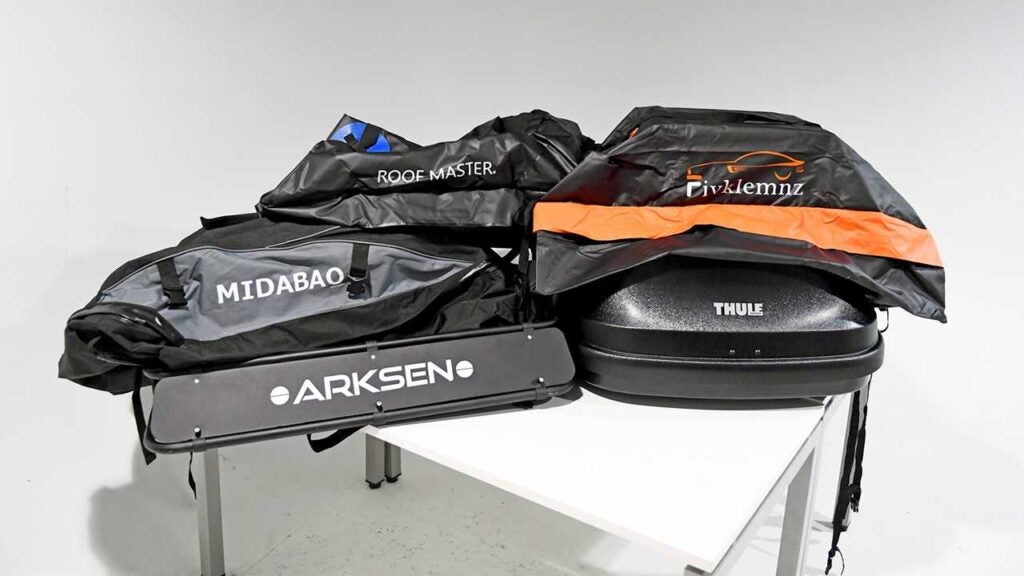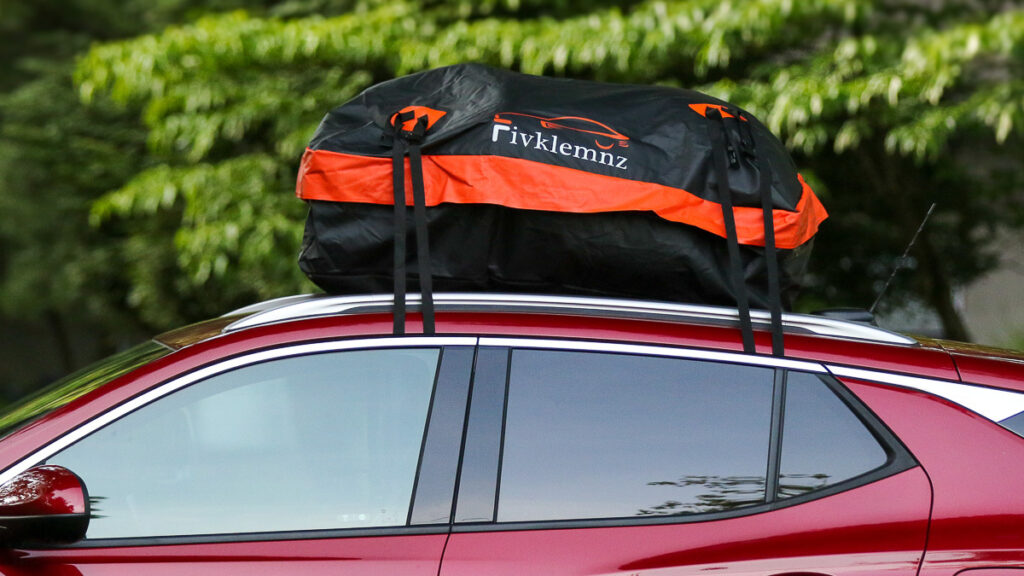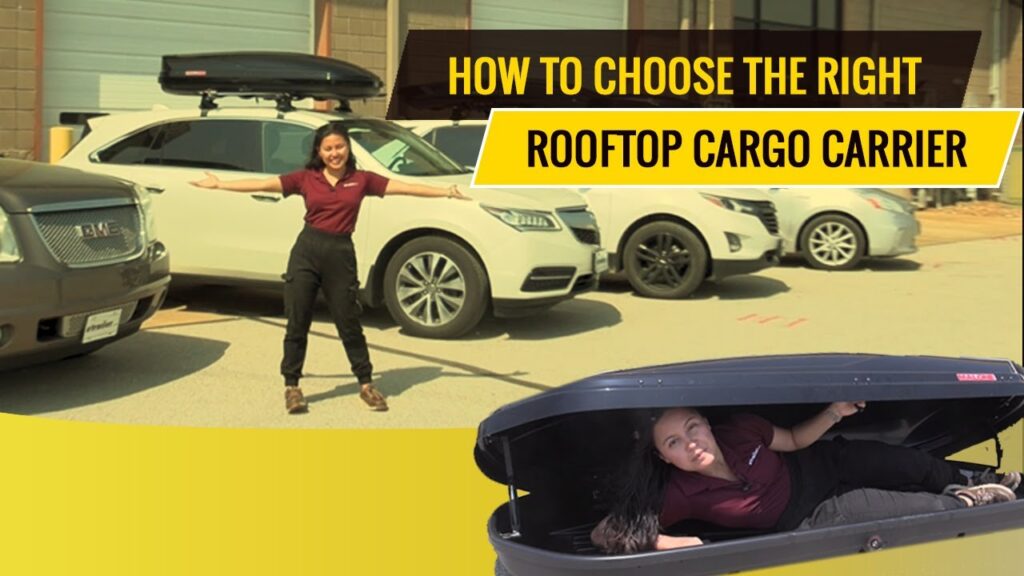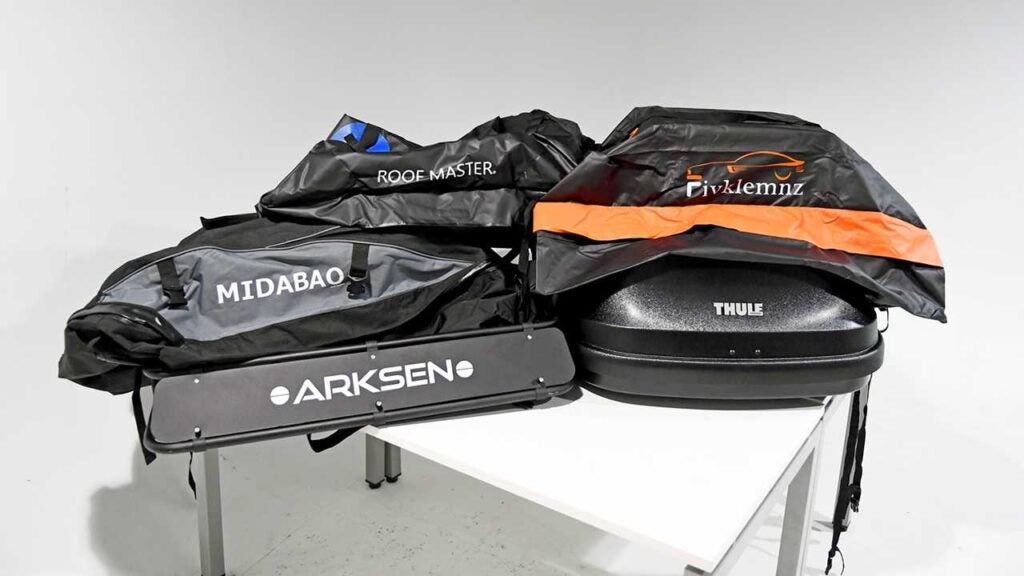So, you’re thinking about getting a roof bag for your next trip, huh? Well, let me tell you, that’s a great idea! Roof bags can be a game-changer when it comes to maximizing space and enjoying a stress-free journey. But with so many options out there, how do you choose the right one for you? Don’t worry, my friend, because I’ve got you covered. In this ultimate guide, we will dive deep into everything you need to know about choosing the perfect roof bag for your needs.
Let’s start by talking about the different types of roof bags available. From soft-shell to hard-shell, each type has its own advantages and disadvantages. We’ll break down the pros and cons of each option, so you can make an informed decision. And that’s not all! We’ll also discuss important factors to consider, such as size, capacity, and durability. After reading this guide, you’ll have all the knowledge you need to make the right choice for your next adventure.
Now, I know what you might be thinking – “But how do I install a roof bag? Will it fit on my car?” Don’t worry, my friend, we’ve got you covered on that too. In this guide, we’ll walk you through the installation process step by step, giving you all the tips and tricks you need. Plus, we’ll provide you with a list of compatible vehicles for each type of roof bag. So, whether you have a sedan, SUV, or even a convertible, you’ll know exactly which roof bag will work for you. So, are you ready to become a roof bag expert? Let’s get started!
The Ultimate Guide to Choosing the Right Roof Bag
Are you in need of additional storage space for your vehicle? Whether you’re embarking on a road trip, camping adventure, or simply need extra room for your belongings, a roof bag can be the perfect solution. Roof bags provide increased storage capacity, protection from the elements, and easy installation. However, with so many options on the market, it’s important to consider several factors before making a purchase.

This image is property of motor1.jppadmin.com.
Benefits of Using a Roof Bag
Increased Storage Capacity
One of the primary advantages of using a roof bag is the increased storage capacity it provides. Instead of cramming your belongings into the limited trunk space of your vehicle, a roof bag allows you to maximize the available room. This is particularly beneficial for larger items such as bicycles, camping equipment, or sports gear. By utilizing the roof space, you can free up valuable interior space and ensure a comfortable journey for everyone.
Protection from the Elements
Another major benefit of using a roof bag is the protection it offers from the elements. Whether you’re facing rain, snow, or extreme heat, a roof bag is designed to keep your belongings safe and dry. Most roof bags are made from durable and waterproof materials that can withstand various weather conditions. This means you can travel worry-free, knowing that your items are protected from any unexpected weather events.
Easy Installation
Installing a roof bag is a simple and straightforward process, making it a convenient option for anyone. Most roof bags come with user-friendly instructions and adjustable straps that allow for easy attachment to your vehicle’s roof rack or crossbars. Depending on the type of roof bag you choose, installation may involve securing the bag with straps, fastening it with buckles, or using a combination of both. Regardless of the specific method, the process can typically be completed in a matter of minutes, saving you time and effort.
Factors to Consider Before Buying a Roof Bag
However, before rushing to purchase a roof bag, there are several factors you should consider to ensure you choose the right one for your needs. These factors include size and capacity, material and durability, compatibility with your vehicle, and security features.
Size and Capacity
The size and capacity of the roof bag are crucial factors to consider. Depending on your specific storage needs, you may require a larger or smaller roof bag. Consider the dimensions of the bag and ensure that it will fit comfortably on your vehicle’s roof. Additionally, assess the bag’s capacity in terms of weight and volume to ensure it can accommodate all of your belongings.
Material and Durability
When it comes to roof bags, durability is key. You want a bag that is made from high-quality materials that can withstand the rigors of travel. Look for roof bags that are constructed from weather-resistant and tear-resistant materials, such as heavy-duty nylon or PVC. Additionally, consider the stitching and zippers used in the construction of the bag to ensure they can withstand repeated use without compromising the bag’s integrity.
Compatibility with Vehicle
Before purchasing a roof bag, it’s essential to check its compatibility with your vehicle. Some roof bags are designed specifically for use with certain types of vehicles, such as cars, SUVs, or vans. Ensure that the roof bag you choose is compatible with your vehicle’s roof rack or crossbars, as this will determine how the bag can be attached and secured.
Security Features
Security should also be a top priority when choosing a roof bag. Look for bags that come with built-in locks or the ability to add locks for added protection. This will deter potential thieves and provide you with peace of mind, knowing that your belongings are secure while you’re away from your vehicle.
Types of Roof Bags
Roof bags come in various types, each with its own set of advantages and disadvantages. The most common types of roof bags are soft roof bags, hard shell roof boxes, and roof baskets.
Soft Roof Bags
Soft roof bags are a popular choice due to their versatility and affordability. These bags are made from durable, waterproof fabric and can usually be folded and stored when not in use. Soft roof bags are lightweight and easy to install, making them an excellent option for occasional use. They can also be easily adjusted to fit a wide range of vehicles and roof rack systems.
Pros of Soft Roof Bags
- Versatility: Soft roof bags can fit on a variety of vehicles and can be used on different types of roof racks or crossbars.
- Affordability: Soft roof bags are generally more affordable compared to other types of roof bags.
- Easy storage: Soft roof bags can be folded and stored in a compact manner when not in use.
Cons of Soft Roof Bags
- Limited protection: Soft roof bags may not provide the same level of protection as hard shell roof boxes.
- Potential noise: Soft roof bags may generate noise during high-speed travel due to wind resistance.
Recommended Soft Roof Bag Brands
- Brand 1: Known for their durable and weather-resistant fabric, Brand 1 offers a range of soft roof bags that provide excellent value for money.
- Brand 2: With their adjustable straps and easy installation, Brand 2’s soft roof bags are a popular choice among outdoor enthusiasts.
Hard Shell Roof Boxes
Hard shell roof boxes offer superior protection and security for your belongings. These roof boxes are made from sturdy materials such as ABS plastic or fiberglass, providing enhanced durability and weather resistance. Hard shell roof boxes are ideal for frequent travelers or those who require maximum protection for their items. While they may be pricier than soft roof bags, they offer unmatched convenience and reliability.
Pros of Hard Shell Roof Boxes
- Enhanced protection: Hard shell roof boxes provide excellent protection against the elements, theft, and damage.
- Aerodynamic design: The streamlined shape of hard shell roof boxes minimizes wind resistance, reducing noise and improving fuel efficiency.
- Increased capacity: Hard shell roof boxes generally offer greater storage capacity compared to soft roof bags.
Cons of Hard Shell Roof Boxes
- Price: Hard shell roof boxes tend to be more expensive than soft roof bags.
- Limited flexibility: Once installed, hard shell roof boxes cannot be easily adjusted or folded down for storage.
Recommended Hard Shell Roof Box Brands
- Brand 3: Known for their durable construction and innovative design features, Brand 3’s hard shell roof boxes offer unparalleled protection and convenience.
- Brand 4: With their sleek and aerodynamic designs, Brand 4’s hard shell roof boxes provide optimal performance and storage space.
Roof Baskets
Roof baskets offer a unique and flexible storage solution for larger items such as camping gear, kayaks, or bicycles. Unlike roof bags or boxes, roof baskets feature an open design that allows for bulky or irregularly shaped items to be securely strapped down. Roof baskets are typically made from sturdy materials such as steel or aluminum, ensuring durability and longevity.
Pros of Roof Baskets
- Versatility: Roof baskets can accommodate various types of items, including oversized or irregularly shaped objects.
- Easy access: The open design of roof baskets allows for quick and easy access to your belongings.
- Customization: Roof baskets often feature attachment points or rails that enable you to add accessories, such as bike racks or ski carriers.
Cons of Roof Baskets
- Limited protection: Roof baskets offer less protection from the elements compared to roof bags or boxes.
- Wind resistance: The open design of roof baskets may generate wind noise and potentially reduce fuel efficiency.
Recommended Roof Basket Brands
- Brand 5: Known for their rugged and durable construction, Brand 5’s roof baskets are designed to withstand extreme conditions and heavy loads.
- Brand 6: With their versatile attachment points and customizable accessories, Brand 6’s roof baskets offer endless possibilities for outdoor enthusiasts.
Installation and Usage Tips
Now that you’ve chosen the right type of roof bag for your needs, it’s important to ensure proper installation and usage. Follow these tips to make the most of your roof bag:
Proper Mounting Techniques
When installing a roof bag, it’s essential to follow the manufacturer’s instructions and guidelines. Ensure that the bag is properly aligned and centered on the vehicle’s roof to distribute the weight evenly. Use the provided straps or fasteners to secure the bag tightly, minimizing any movement during travel.
Loading and Securing Items
Before loading your belongings into the roof bag, consider their weight and size distribution. Place heavier items at the bottom and distribute the weight as evenly as possible. Use packing cubes or bags to organize and protect your items, and secure them with straps or bungee cords to prevent shifting during transit.
Driving and Maintenance
When driving with a roof bag, be mindful of its presence and the extra height it adds to your vehicle. Pay attention to low clearance areas, like garages or overpasses, and adjust your driving accordingly. Additionally, regularly check the roof bag’s straps and fasteners during long trips to ensure they stay securely fastened.

This image is property of www.forbes.com.
Maintenance and Care
To prolong the lifespan of your roof bag and ensure its optimal performance, regular maintenance and care are essential. Follow these maintenance tips:
Cleaning and Storage
After each use, clean the roof bag with mild soap and water to remove any dirt or debris. Avoid using harsh chemicals, as they may damage the bag’s material. Once clean, allow the bag to air dry fully before folding and storing it in a dry and cool place.
Regular Inspections
Periodically inspect the roof bag for signs of wear and tear, such as loose stitching or damaged zippers. Check the straps, buckles, and fasteners for any signs of weakness or breakage. If any issues are detected, promptly replace or repair the affected parts to ensure the continued safety and functionality of the roof bag.
Repair and Replacement
If your roof bag sustains significant damage or becomes unusable, it may be necessary to repair or replace it. Contact the manufacturer or a professional to assess the extent of the damage and determine the best course of action. Remember that a damaged roof bag can compromise the safety of your belongings and should not be used until repaired or replaced.
Safety Considerations
While roof bags offer numerous benefits, it’s crucial to consider safety when using them. Here are some important safety considerations:
Weight Distribution and Load Capacity
Ensure that your roof bag’s load capacity is not exceeded. Overloading the roof bag can lead to instability and compromise the handling of your vehicle. Distribute the weight evenly and avoid positioning heavy items on one side. Consult your vehicle’s manual to determine the recommended load capacity for your roof rack system.
Driving with a Roof Bag
When driving with a roof bag, be aware that it may affect the aerodynamics and handling of your vehicle. Reduce your speed and increase following distances to compensate for the additional weight and wind resistance. Be cautious when changing lanes or making turns, as the higher center of gravity may impact stability.
Avoiding Interference with Vehicle Functions
When installing a roof bag, ensure that it does not obstruct any essential vehicle functions, such as the opening of sunroofs or rear hatches. Maintain clear visibility by adjusting rearview mirrors as necessary. Regularly check the roof bag during stops to ensure it remains securely fastened and no interference occurs.

This image is property of i.ytimg.com.
Conclusion
Choosing the right roof bag can greatly enhance your vehicle’s storage capacity and convenience. By considering factors such as size, material, compatibility, and security features, you can make an informed decision that suits your specific needs. Whether you opt for a soft roof bag, hard shell roof box, or roof basket, proper installation, usage, and maintenance are crucial to ensure safe and successful travels. So, take the time to choose the right roof bag, enjoy the convenience it offers, and embark on your next adventure with peace of mind.

